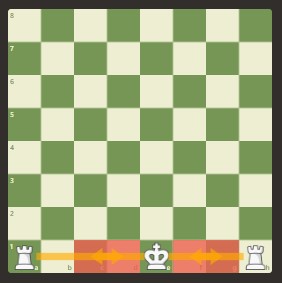Facts

Background
The game of chess was first created in India about 1500 years ago.
It then spread across Asia and into Europe and evolved to it's current form about 1500 CE.
From the late 18th century, different playing styles have been dominating.
They appeared in the following order; romantic, scientific, hypermodern and new dynamism.
Modern chess tournaments began in the late 1800s and the first chess world championship was held in 1886.
In 1997, chess computer "Deep Blue" was the first computer to beat the current world champion, Garri Kasparov.
Since then, computers have been superior human beings in the game of chess.
In the 21st century, playing chess online has become popular, with a boom in 2020, due to the pandemic.

Random facts
Over 30 million people plays chess online on chess.com.
The avarage rating of chess players is 740. Masters have a rating of 2000 or higher.
The highest rated player is Magnus Carlsen with a rating of 2859 at the moment.
The strongest chess computer today, Stockfish 15, has a rating of 3650.
The weirdest chess rule, en passant, was created to balance out new movement rules for pawns.
It is also said that it would prevent certain openings from being extremely good because of these new rules.
There are about 1720 grandmasters in chess today.

Computers
One of the first chess computers was "Mac Hack VI", at the level of an amateur.
Different methods for searching includes minimax search, often combined with alpha-beta pruning,
Monte Carlo tree search and transposition tables.
Today, the most well-known chess computers are Stockfish, AlphaZero/Leela-chess and Komodo.
Tools used by chess engines includes opening books, endgame tablebases and neural networks.
In late 2018, AlphaZero and Stockfish faced of in a chessmatch of 1000 games,
and AlphaZero crushed Stockfish through winning 155 games to 6. The other 839 games were draws.

Impressive facts
Some grandmasters, for example Magnus Carlsen, has played against multiple people at the same time,
sometimes blindfolded, and won most of the games.
The longest chess game in history was 269 moves and took over 20 hours to complete. It still ended in a draw.
The longest game in a world championship match was 136 moves long. It was Magnus Carlsen who beat
Ian Nepomniachtchi in a 8 hour long game in 2021.
It was a crazy endgame where Ian resigned, after promotion from Carlsen was unstoppable.
The biggest chess channel is Gothamchess, with 1.37 million subscribers on Youtube



















